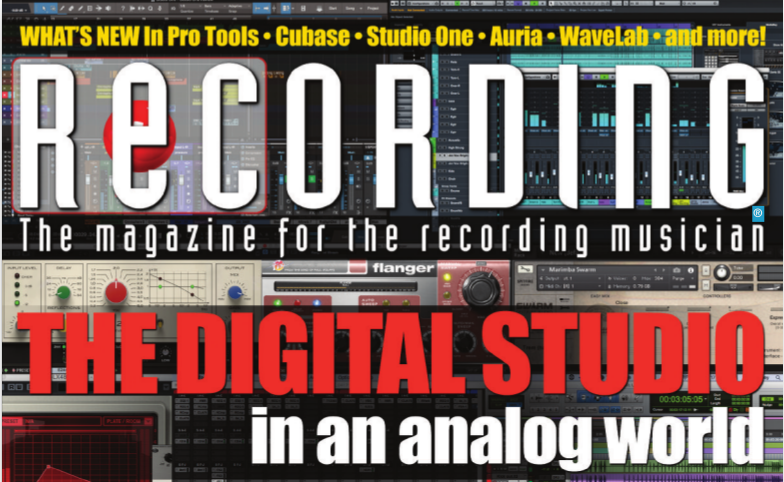
My last article for Recording Magazine was great fun to write, since I got to write about the single biggest factor in improving my mixes over the past decade. It wasn’t until I understood how distortion & harmonics can be used in a mix, that I feel like my mixes were finally sounding the way I always had heard them in my head. Before I understood distortion in this way, I tended to overuse things like EQ and compression in an attempt to make the recordings sound richer — only once I started using distortion in this way did things finally sound “right” to me.
Recording Mag has been kind enough to provide a PDF of my article if you aren’t a subscriber. Here is an excerpt, to whet your harmonic appetite:
There is a school of thought that says in this digital age of plug-ins, a recordist is best off recording tracks as cleanly and as flat as possible, to maximize flexibility during the mix. Another school of thought says that you should craft your tones ahead of time on the way into a digital recording system, to maximize the sonic potential and save yourself time during the mix. Both approaches are used successfully every day on recordings, but there is little question that the latter approach generally requires a much higher budget for hardware: analog preamps, EQs, compressors, and other devices to achieve the desired tonality.
In a way, the gear choices that an engineer makes reflects their sonic personality. Familiarity allows the engineer to quickly get the sounds they are looking for. For busy professional engineers who need to work quickly, this approach makes perfect sense, and is at the root of the analog gear explosion of the last decade. The amount of great gear available these days, all made by passionate people, is astounding.
Ask the right question
The new generation of front-end hardware typically has more controls, often a gain and a level knob or perhaps simple EQ or input impedance controls to manipulate tone, rather than just a single gain knob on an interface preamp. Despite the additional expense of many of these units, they aren’t necessarily better—they just sound different, and in many cases the differences are quite subtle. The four main parameters of audio are frequency response, distortion, noise, and time-based effects, so whatever differences in sound exist between audio products like mic preamps can be described in terms of these parameters, and we can manipulate these parameters using plug-ins.
We can debate whether digital distortion can sound the same as analog, but I believe this is the wrong question. Rather, I prefer to ask: can we make a given recording sound better with the tools available to us? With distortion plug-ins, we can add back in much of the tone we associate with analog technology: tape, tubes, analog preamps, etc. We can then fine-tune the added distortion with additional EQ or compression.
Thanks to Mike Metlay, my editor at Recording Magazine, for providing this PDF.
